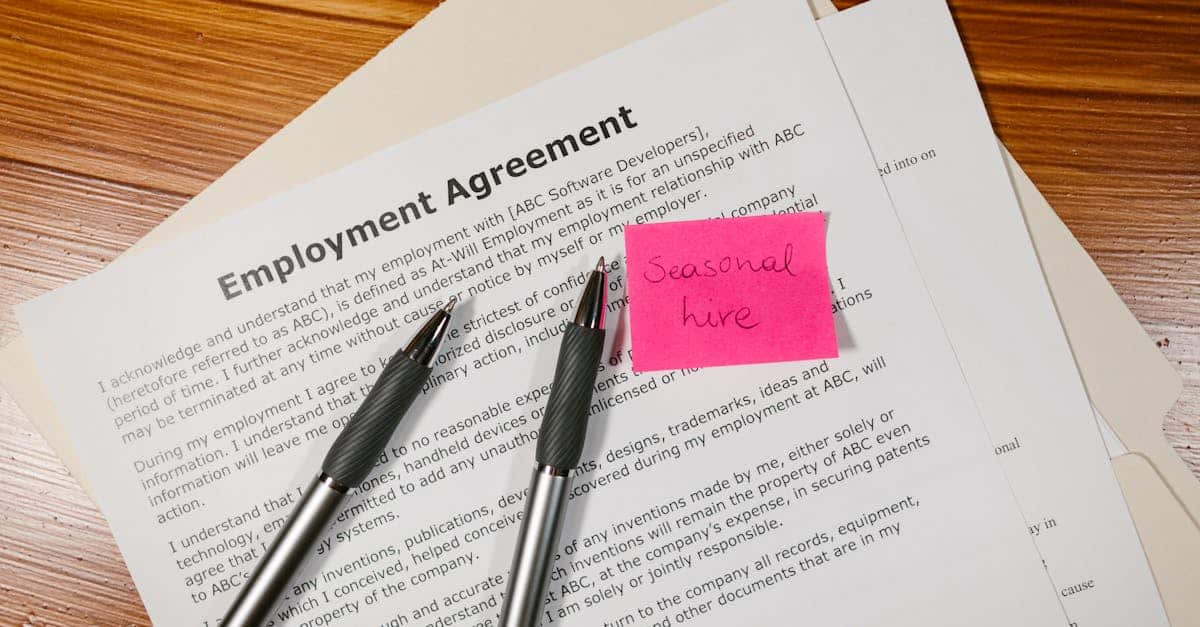
Introduction
Still wrestling with manual I‑9s, slow background checks, and messy audit trails? As companies scale, those everyday frictions turn into real compliance and time‑to‑hire risks. As part of HR digitization, no‑code Document AI lets HR, compliance, and legal teams eliminate repetitive data entry, tighten privacy controls, and preserve defensible evidence — without a heavy engineering lift.
This post walks through practical, implementable patterns: from **OCR for IDs** and **auto‑filling I‑9s** to **extracting background‑check fields**, building encrypted capture pipelines with PII detection and redaction, automating vendor triggers and conditional approvals, and keeping immutable audit trails and e‑sign receipts. Use these recipes and controls to build secure, auditable HR automation that scales.
Practical Document AI use cases for HR: OCR for IDs, auto‑filling I‑9s, extracting background‑check fields, and contract clause tagging
OCR for IDs
Use OCR to capture text from driver’s licenses, passports, and other identity documents. High‑quality OCR reduces manual entry errors and lets you automatically validate expiration dates, document types, and name matching against HRIS records.
How teams use it
- Auto‑populate employee profiles in your HR software and HRIS.
- Flag mismatches between submitted IDs and applicant data for review.
- Support paperless HR processes for faster onboarding.
Auto‑filling I‑9s
Document AI can extract fields required for Form I‑9 and feed them into a prefilled I‑9 workflow, reducing repetitive typing and compliance risk. Combine OCR with validation rules to ensure required fields are complete before an e‑sign step.
Practical tip
- If you don’t have a Formtify I‑9 template, model your I‑9 flow after the employment agreement template for structured data capture: https://formtify.app/set/employment-agreement—nyc—basic-template-a8xx7.
Extracting background‑check fields
Use Document AI to pull standardized fields from background check reports (dates, adjudication outcomes, county/state fields) and normalize them for vendor systems and case management dashboards.
Contract clause tagging
Apply NLP to tag clauses in offer letters, NDAs, and contractor agreements — e.g., noncompete, indemnity, and termination. Tagging makes contract review faster and enables analytics on common negotiation points.
Pair clause tagging with your contract templates, such as NDAs and independent contractor agreements: https://formtify.app/set/non-disclosure-agreement-3r65r and https://formtify.app/set/independent-contractor-agreement-5jhqd.
Building secure capture pipelines: encrypted upload, PII detection, and automatic redaction before storage or sharing
Encrypted upload and storage
Always encrypt documents in transit (TLS) and at rest (AES‑256 or equivalent). Use tokenization for stored identifiers so raw PII is only available within a secure vault or via controlled APIs.
PII detection and classification
Apply PII detectors early in the pipeline to classify documents (e.g., IDs, SSNs, health forms). Tag documents with sensitivity levels to drive downstream handling rules—who can view, which systems can ingest, and retention schedules.
Automatic redaction
Before sharing or storing less‑trusted copies, run automatic redaction of detected PII fields. Keep a secure, access‑controlled original for audit purposes and a redacted copy for routine workflows.
- Redact at field level (SSN partial mask) or at region level (image area) depending on compliance needs.
- Integrate with cloud HR systems so the HRIS only receives the minimal data needed.
When handling medical authorizations or health data in background checks, use a consent workflow like a HIPAA authorization template to capture permissions: https://formtify.app/set/hipaaa-authorization-form-2fvxa.
Automating verification workflows: trigger background check vendors, conditional approvals, and hold/release rules based on results
Event‑driven triggers
Use Document AI outputs to trigger downstream processes automatically. For example, when I‑9 fields are verified, a webhook can call a background check vendor API or move the candidate into a conditional approval state.
Conditional approvals and business rules
Define rules such as:
- Auto‑approve when background checks return “clear” and no disqualifying clause is present.
- Place holds for manual review if identity fields mismatch or criminal history flags appear.
- Escalate high‑risk findings to a compliance queue with time‑bound SLAs.
Vendor orchestration
Use an orchestration layer to rotate or call preferred background check vendors based on geography, vendor load, or service level. This reduces manual ticketing and speeds decisioning in HR automation and broader HR digital transformation efforts.
When choosing local providers or integrators, many teams search for “hr digitization services near me” to find regional vendors that can meet data residency and local compliance needs.
Maintaining audit‑ready evidence trails: immutable logs, e‑sign receipts, and document versioning for investigations and audits
Immutable logging
Record every action—upload, OCR extraction, redaction, user access, and workflow transitions—in an append‑only audit log with timestamps and actor IDs. Immutable logs are essential for investigations and regulatory audits.
E‑sign receipts and provenance
Keep certified e‑sign receipts that include signer identity proof, IP, and timestamp. Link receipts to the exact document version and the extracted data snapshot used to make employment decisions.
Document versioning and retention
Maintain version history so you can reproduce the state of a file at any decision point. Implement retention and defensible deletion policies consistent with labor and privacy laws.
KPIs and ROI
Track metrics such as time‑to‑onboard, percentage of fully automated I‑9s, reduction in manual review hours, and error rates pre‑ and post‑automation. These KPIs show the business value of HR digitization and help prioritize further investments in HRIS and HR automation.
Template and integration recipes: which Formtify templates to pair with Document AI for each workflow (I‑9s, offers, NDAs, contractor files)
Recipe overview
Map each workflow to a Formtify template, Document AI extraction schema, and target HR system. Below are practical pairings and the minimal fields to extract.
I‑9s
Recommended approach: build a Formtify I‑9 template (capture name, DOB, document type, document number, issue/expiry dates) and feed extractions into your HRIS for verification and e‑sign tracking.
Offers (employment agreements)
Pair the employment agreement template for offer letters: https://formtify.app/set/employment-agreement—nyc—basic-template-a8xx7.
- Extract: job title, compensation, start date, probation terms, signer identity.
- Integration: prefill HRIS offer modules and trigger onboarding workflows.
NDAs
For confidentiality clauses and signature capture, pair NDAs with clause tagging: https://formtify.app/set/non-disclosure-agreement-3r65r.
- Extract: effective date, parties, term, signature, special clauses.
Contractor files
Use the independent contractor agreement template to standardize contractor engagements: https://formtify.app/set/independent-contractor-agreement-5jhqd.
- Extract: contractor tax IDs, payment terms, deliverable schedules, insurance proofs.
- Integration: sync to vendor management or accounts payable and to your HRIS contractor module.
Background checks and medical authorizations
Include a consent template for sensitive checks: https://formtify.app/set/hipaaa-authorization-form-2fvxa. Extract consent timestamps and scope to prove lawful processing.
For each recipe, standardize field names and use transformation logic to map to HRIS fields (e.g., first_name => employee.firstName). That makes downstream reports, workforce analytics, and automation rules predictable and auditable.
Compliance and vendor management: vetting Document AI providers, DPAs, and fallback human review for edge cases
Vetting providers
Assess vendors for security certifications (SOC 2, ISO 27001), data residency options, proven HR integrations, and explainability features for model outputs. Confirm they will sign a robust DPA and support required subcontractors.
Data Processing Agreements and controls
Ensure the DPA covers processing purposes, subprocessor lists, incident notification timelines, and deletion/return mechanics. Verify contractual commitments for retention, breach liability, and audit rights.
Fallback human review
Define quality thresholds where the Document AI confidence score triggers human review. Typical edge cases: poor image quality, name mismatches, ambiguous legal clauses, or flagged criminal records.
- Set SLAs for human review to avoid onboarding delays.
- Log reviewer decisions to retrain models and reduce false positives over time.
Operational considerations
Plan for model monitoring (drift), periodic accuracy audits, and integration testing with HRIS and HR software. Document these steps in your digital HR transformation roadmap so stakeholders know how automation scales and where manual control remains necessary.
When searching for assistance, teams often evaluate “hr digitization tools”, look at “hr digitization benefits” case studies, and sometimes search for “hr digitization services near me” to find local partners who can run pilots and integrate with existing HRIS.
Summary
Document AI makes common HR bottlenecks—manual I‑9s, slow background checks, and scattered audit trails—both measurable and fixable. By combining OCR, PII detection and redaction, event‑driven orchestration, and immutable logging, teams can reduce errors, speed onboarding, and keep defensible evidence for audits. These patterns demonstrate practical wins for HR and legal teams and show how HR digitization delivers better controls, lower risk, and faster time‑to‑hire. Ready to pilot templates and workflows? Explore Formtify to get started: https://formtify.app
FAQs
What does HR digitization mean?
HR digitization is the move from paper‑based and manual HR processes to digital workflows and systems. It includes adopting tools like HRIS, Document AI, and automation to streamline onboarding, compliance, payroll, and recordkeeping.
How do I start digitizing HR?
Begin with a small, high‑impact process such as onboarding or I‑9 capture: map the steps, select templates and extraction schemas, and run a pilot that combines Document AI with your HRIS. Set clear KPIs, define privacy controls, and plan human‑in‑the‑loop checks for edge cases.
What are the main benefits of HR digitization?
Key benefits include faster time‑to‑hire, fewer data entry errors, stronger privacy controls, and auditable evidence trails for compliance. These gains also free HR and legal teams to focus on higher‑value work instead of repetitive tasks.
How much does HR digitization cost?
Costs vary by scope—factors include template and integration effort, vendor fees, and expected volume of documents. Start with a pilot to measure ROI on metrics like reduced manual hours and faster onboarding, then scale based on demonstrated savings.
Which tools are commonly used for HR digitization?
Common tools include HRIS platforms, Document AI/OCR services, workflow orchestration layers, background‑check vendors, and e‑signature providers. Choose solutions that offer strong security, DPAs, and easy integrations with your existing HR systems.





